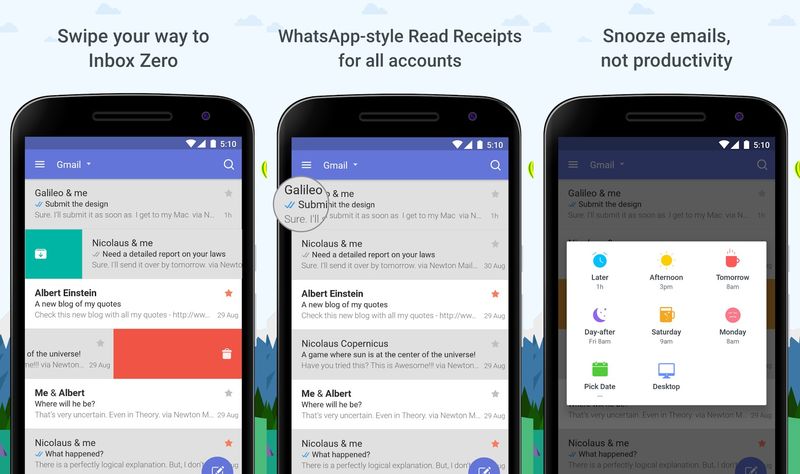When CloudMagic appeared on the app scene in 2014 – as it usually is with any new product, regardless of the qualities of the product at hand -, it started out in relative obscurity. That didn’t last long, though, and CloudMagic became a fan-favorite almost overnight thanks to its impressive assortment of useful features.
With CloudMagic, synchronizing your accounts on multiple devices was child’s play, with the number of manageable accounts being maxed out at 5 – which is more than enough, unless you’re into something fishy or you’re among the busiest people in your city. CloudMagic’s search function was also outstanding, boasting an unparalleled quickness that, if you hadn’t known better, could’ve easily made you think that the app was reading your mind, knowing which e-mails you were going to search for. Moreover, in March 2014, CloudMagic introduced Cards, a set of add-ons tailor-made for popular third-party services built into the app enabling you to save recipes in Evernote, pocket articles in Pocket, add items to your to-do list in Trello, perform various actions in Salesforce, and attend to customer service matters in Zendesk. All in all, CloudMagic was a top-tier e-mail app that became immensely popular for a reason, though its popularity led to questionable business decisions.
In January 2015, CloudMagic introduced CloudMagic Pro, a $4.99/month subscription plan granting you the opportunity to add as many e-mail addresses as you like, synchronize preferences across devices, and download and open a wide range of attachments in the background. The Pro version launched a brand new security feature, making it possible to wipe all e-mail data from your device via CloudMagic’s website in case you lost one of your treasured Apple products, or, even worse, it was stolen. To put the always-necessary icing on the cake, users going Pro enjoyed priority customer support.
Knowing CloudMagic’s popularity, the introduction of a monthly subscription plan in itself was not a miscalculated decision, what made it head-scratching was the apparent lack of regard for potential user backlash. To put it short, the Pro version was a flop, and CloudMagic had no other choice but to discontinue its premium product line and make the features included in the subscription plan free in April 2015, barely three months after the launch.
Then came 14 September 2016, and with it a rebranded, renamed CloudMagic: Newton Mail. Newton Mail runs on all relevant Apple platforms – including the Apple Watch -, and offers a delicious mixture of old and new features. Seamless synchronization of settings and accounts across any number of devices, easy handling of e-mails with short and long swipes, complex sender profiles with data collected from the internet (when available), an assortment of connected apps that CloudMagic users will greet as old companions, and a fast, efficient service in all aspects of the app that is a perfect match for its sleek, minimalist design. Sounds awesome, right? It does – until you take a peek at the price tag.
After a two-week trial period, you have to shell out a per-year subscription fee of $49.99 (about $4/mo, which now includes Sender Profile, formerly available for $24.99/year) to continue the Newton experience, which is a bit too much for our liking, and based on the one-star, foaming-at-the-mouth user reviews, many others came to the same conclusion, despite the fact that those who have paid for CloudMagic can use Newton Mail for free for a year. Developers are putting out one update after another, but Newton Mail is still not off to a great start due to its astronomical subscription fees – which, even though there’s no questioning the quality of the services it provides, are still too high for the majority of everyday users.
Businesses and professionals with a heavy work- and e-mail load will most probably deem Newton Mail an app that’s well worth its lofty price, but that does not mean that its future – and the future of not free-of-charge, third-party e-mail apps – is not in limbo. But let’s not be overly negative, because Newton Mail’s failure is not set in stone, either, so we’ll just have to wait and see how this scenario plays out – maybe in a few months, we’ll be talking about a free Newton Mail app.













